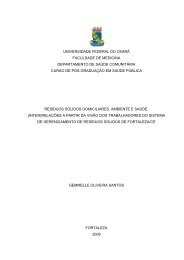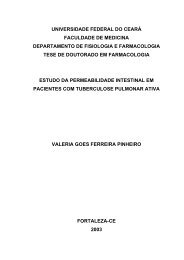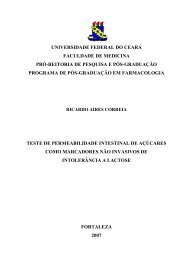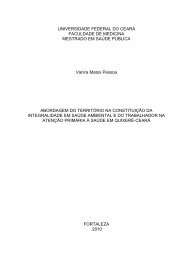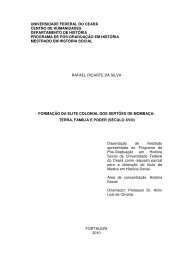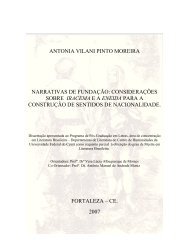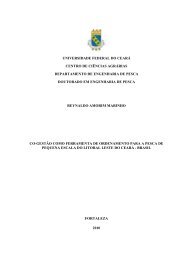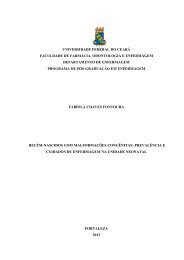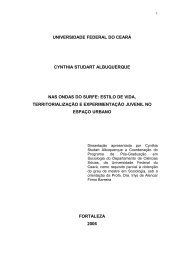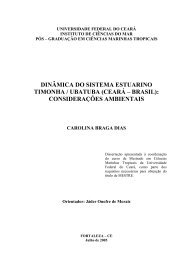Tungíase: doença negligenciada causando patologia grave
Tungíase: doença negligenciada causando patologia grave
Tungíase: doença negligenciada causando patologia grave
You also want an ePaper? Increase the reach of your titles
YUMPU automatically turns print PDFs into web optimized ePapers that Google loves.
JAM ACAD DERMATOL<br />
VOLUME 60, NUMBER 3<br />
In developing countries scabies is a common<br />
parasitic skin disease, and it is associated with considerable<br />
morbidity, such as excoriations, eczematization,<br />
secondary infection leading to impetigo,<br />
suppuration, abscess formation, lymphadenopathy,<br />
and poststreptococcal glomerulonephritis. 1-10 In resource-poor<br />
urban and rural communities the prevalence<br />
of the infestation with Sarcoptes scabiei may<br />
reach 10% in the general population and 59% in<br />
children. 1,2,4,7,9,11-19 In an urban slum in Bangladesh,<br />
the incidence in children younger than 5 years was<br />
952/1000/year, indicating that nearly all children<br />
experienced at least one infestation per year. 20 This<br />
is in contrast to the situation in industrialized countries,<br />
where the disease occurs sporadically in all age<br />
groups, particularly in sexually active adults, or<br />
causes epidemics in institutions and nursing<br />
homes. 8,21-26<br />
Many factors have been suggested to determine<br />
the epidemiology of scabies in impoverished communities,<br />
including social attitudes, population<br />
movements, malnutrition, lack of access to health<br />
care, inadequate treatment, deficient hygiene, and<br />
crowding, but so far these assumptions have not<br />
been substantiated. 3,6,7 As in most countries scabies<br />
is not a notifiable disease, usually only large outbreaks<br />
tend to be reported. 27 By consequence, what<br />
is known about the epidemiology of scabies is<br />
mainly based on data from hospital and outpatient<br />
records or certain high-risk groups. 6,28-36 Risk factors<br />
for occurrence of disease have rarely been studied in<br />
Africa and Asia, 1,2,7,20 but have not been investigated<br />
in the Americas.<br />
We studied the epidemiology of scabies in an<br />
impoverished rural community in Brazil during two<br />
seasons of the year, and identified risk factors associated<br />
with the presence of scabies and the occurrence<br />
of severe disease. Our results show that in this<br />
setting scabies is predominantly a disease of children<br />
with the occurrence and severity of infestation being<br />
related to poor living conditions and illiteracy, and<br />
that transmission remains stable throughout the year.<br />
METHODS<br />
Study area<br />
The study was performed in Feliz Deserto, a small<br />
coastal town (3850 inhabitants) situated about 120<br />
km south of Maceió, the capital of Alagoas State in<br />
northeast Brazil. The study area was confined to<br />
those districts of Feliz Deserto where, according to<br />
the agents of the National Health Program Family<br />
Health Program (Programa de Saúde da Família),<br />
scabies repeatedly occurred in the past 5 years.<br />
Climatic, social, cultural, and economic characteristics<br />
of the study area were described previously. 10<br />
Feldmeier et al 437<br />
Study design<br />
Two cross-sectional studies were performed: all<br />
households in the study area were visited in<br />
June/July 2003 (end of rainy season) and a second<br />
time in October/November 2003 (peak of dry season).<br />
All individuals who had spent at least 4 nights<br />
per week in their household during the last 3 months<br />
were eligible for the study. This excluded individuals<br />
only temporarily present in the area who might have<br />
confounded the risk factor analysis. In both door-todoor<br />
surveys, households were revisited 3 times if an<br />
eligible household member was absent. Each survey<br />
was carried out within a period of 10 weeks. The<br />
household members were examined for the presence<br />
of scabies and other parasitic skin diseases.<br />
Using standardized questionnaires, information on<br />
demographic, socioeconomic, environmental, and<br />
behavioral variables were obtained. These questionnaires<br />
were tested before their use. To exclude<br />
interobserver bias, all clinical examinations were<br />
carried out by one investigator (A. J.). However,<br />
some degree of recall bias cannot be excluded in our<br />
setting.<br />
Clinical examination and case definition<br />
The household leaders were asked for a room<br />
with good light and in which privacy was guaranteed.<br />
In this room, the whole body including the<br />
breasts and the genital area was thoroughly examined<br />
for the presence of skin lesions typical for<br />
scabies. Children younger than 10 years were only<br />
examined in the presence of a caretaker, usually the<br />
mother. The diagnosis of scabies was made clinically<br />
after well-established and approved methods in the<br />
developing world. 1,2,6,9,37 Skin scraping cannot be<br />
considered to be of help in this setting, as its<br />
sensitivity is low, and the method is not feasible for<br />
surveys in resource-poor settings. 38-42<br />
Scabies was suggested if itchy papular, papularcrusted,<br />
or vesicular lesions were present. An individual<br />
was defined to have scabies if at least two of<br />
the following 3 requirements were fulfilled: presence<br />
of one or more typical lesions for longer than 2<br />
weeks, pruritus that intensified at night, or at least<br />
one more family member with similar lesions. The<br />
validity of this case definition in resource-poor<br />
settings has been shown previously. 9<br />
After the diagnosis of scabies was made, the<br />
patients and their families were treated with 0.2%<br />
deltamethrin lotion (Deltacid, Solvay Farma, São<br />
Paulo, Brazil).<br />
Bacterial superinfection was diagnosed when<br />
pustules, abscesses, or suppuration were present.<br />
Superinfected lesions were treated with oral roxithromycin<br />
(Floxid, Solvay Farma). The draining



